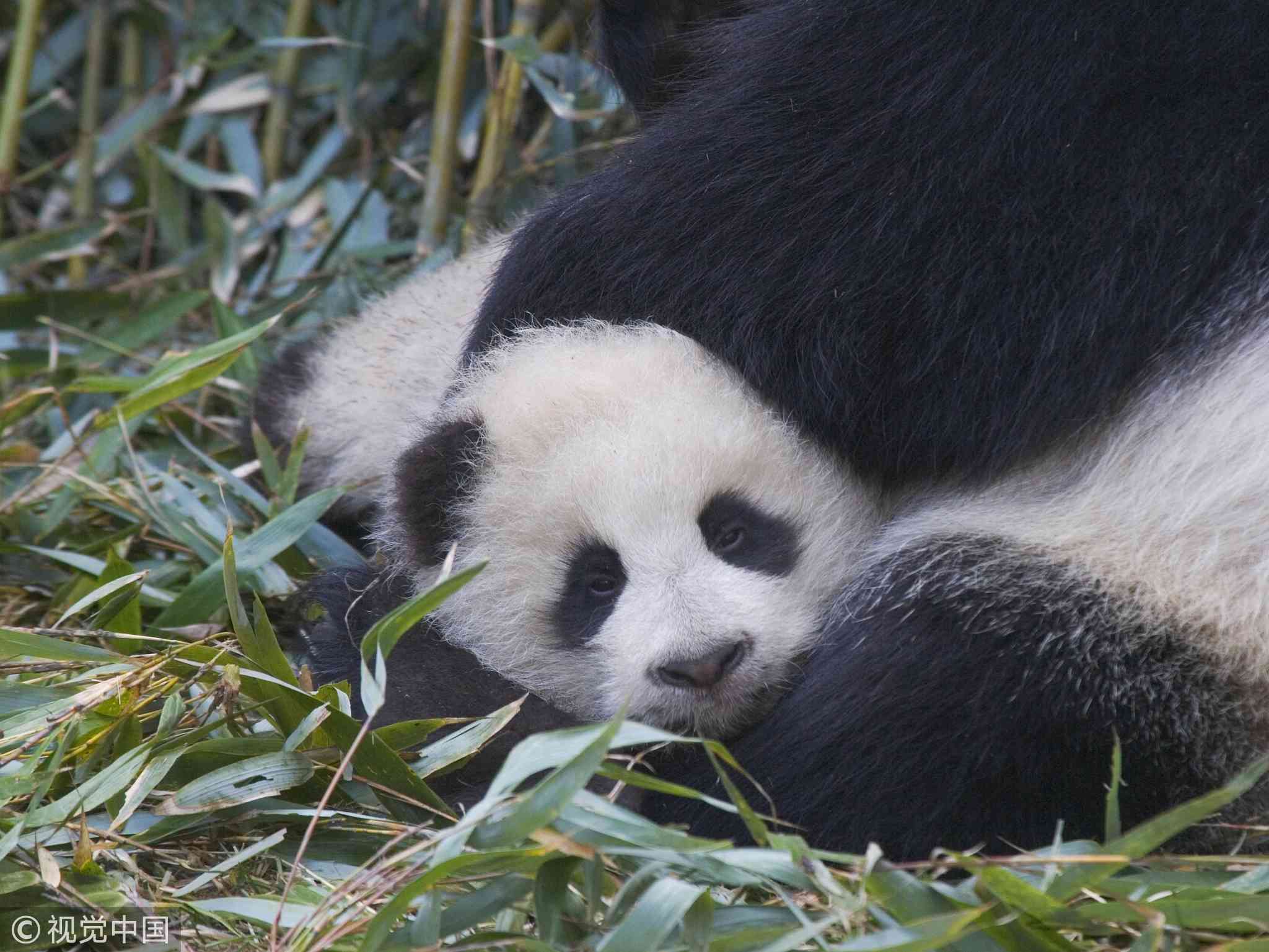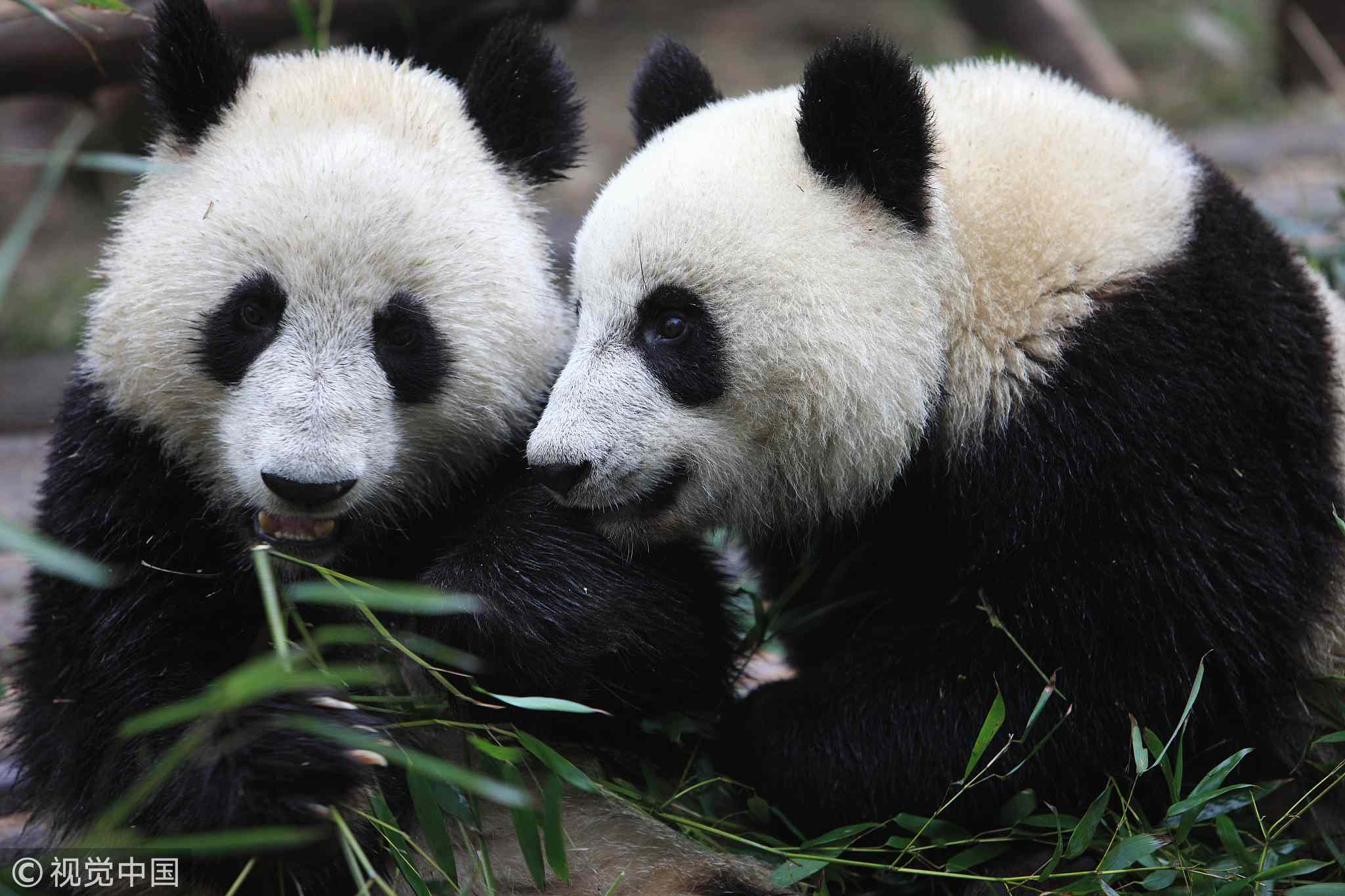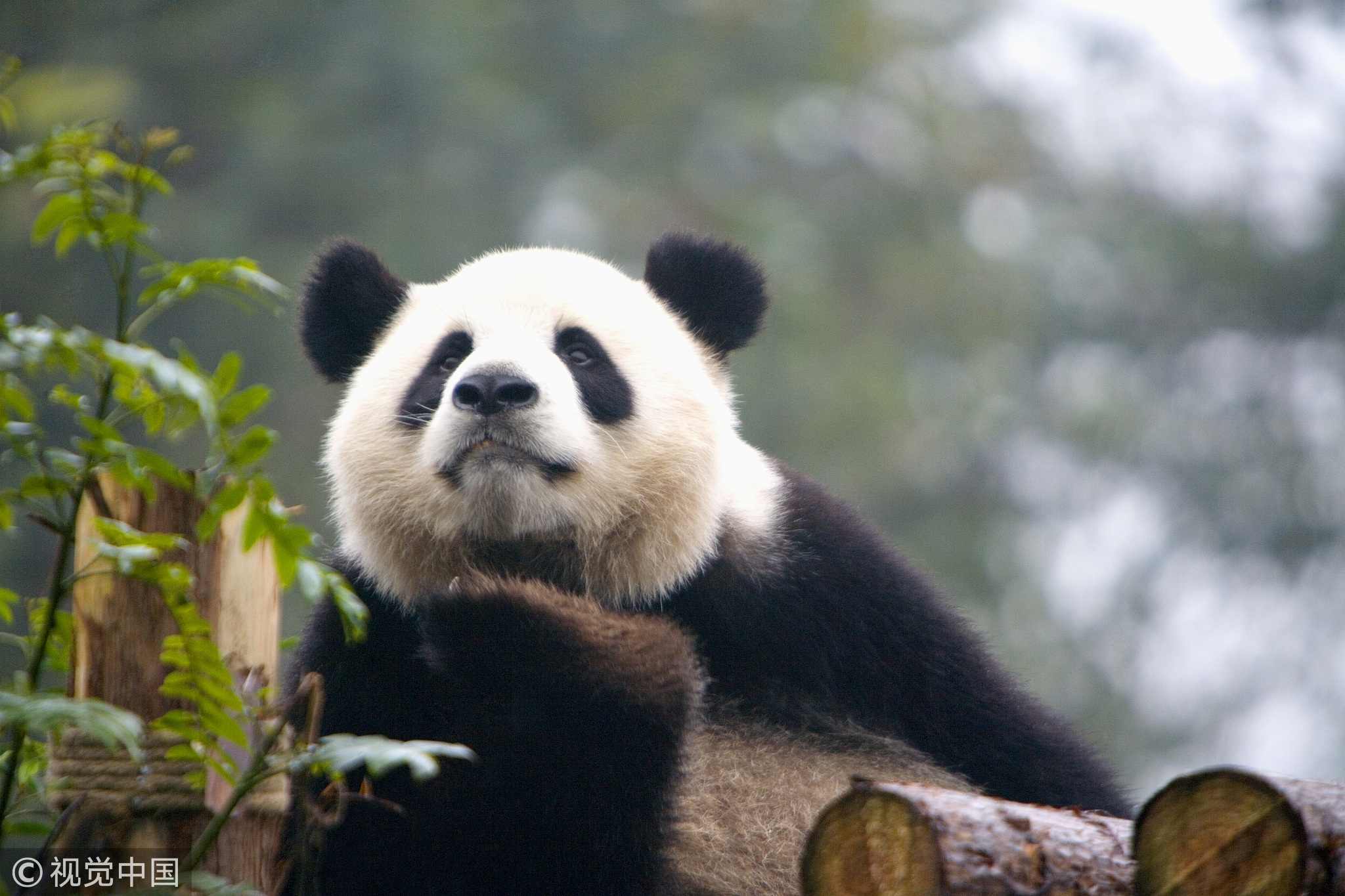
Nature
17:45, 04-Jan-2019
How to help giant pandas return to nature?
Updated
16:56, 07-Jan-2019
CGTN

Giant pandas have always been a symbol of China's animal conservation.
In 2016, the International Union for Conservation of Nature (IUCN) downgraded the giant panda from "endangered" to "vulnerable" on the global list of species at risk of extinction, but it pointed out that giant pandas are still not safe.

A giant panda cub in the wild. /VCG Photo
A giant panda cub in the wild. /VCG Photo
Most giant pandas alive are captive, only fewer than 2,000 giant pandas live in the wild. Captive pandas have lower reproduction rate and weaker immune system, therefore, it's necessary and important to increase the number of wild pandas.
One of the most effective methods to help giant pandas return to the wild could be increasing the number of bamboo plants, their favorite food.

Pandas eating bamboo leaves. /VCG Photo
Pandas eating bamboo leaves. /VCG Photo
"Pandas like eating. They could spend more than 12 hours a day eating fresh bamboo, which they like because it is easy to get and they are a little lazy. As a result, a dense forest is needed, both to provide them with enough food and shorten their foraging distance," said Liu Yong, an engineer from the Giant Panda Rewilding Training Center.
Since December 2017, Chinese researchers have been working on a project to manage bamboo forests which used to grow naturally in northwest China's Sichuan Province.
The project is a collaboration between the National Forestry and Grassland Administration, the Ministry of Finance and the Global Environment Fund, with a total investment of 400,000 yuan (around 58,300 U.S. dollars).

Pandas enjoying in water. /VCG Photo
Pandas enjoying in water. /VCG Photo
According to the Giant Panda Rewilding Training Center, an experimental base of about 14 hectares on Huaying Mountain in Guang'an, northwest China's Sichuan Province, has improved its annual yield of stalks and fresh shoots by about 33 metric tons.
To have more green coverage on the mountain, the staff needed to cut the old and slim stalks to make more space for new shoots and cover the stone areas with three centimeters of soil.

Bamboo forest. /VCG Photo
Bamboo forest. /VCG Photo
Bamboo is not just food for pandas but its roots have the ability to maintain the nutrients of the soil and prevent the land from degrading. It's also useful in creating a sustainable ecological environment which is helpful to bring pandas back into the wild.
Apart from this, China also invites international organizations to participate in panda research. An international conference about giant pandas was held between November 7-11 last year. Experts from many countries attended the conference.
Read more: Best panda moments of 2018

A giant panda. /VCG Photo
A giant panda. /VCG Photo
Despite much efforts, increasing the population of wild pandas remains a hard task. According to the IUCN, an estimated one-third of bamboo habitats could disappear due to climate change in the next 80 years. With fast urbanization, giant pandas' struggle to survive in the wild will get even tougher.
(With inputs from China Daily)

SITEMAP
Copyright © 2018 CGTN. Beijing ICP prepared NO.16065310-3
Copyright © 2018 CGTN. Beijing ICP prepared NO.16065310-3